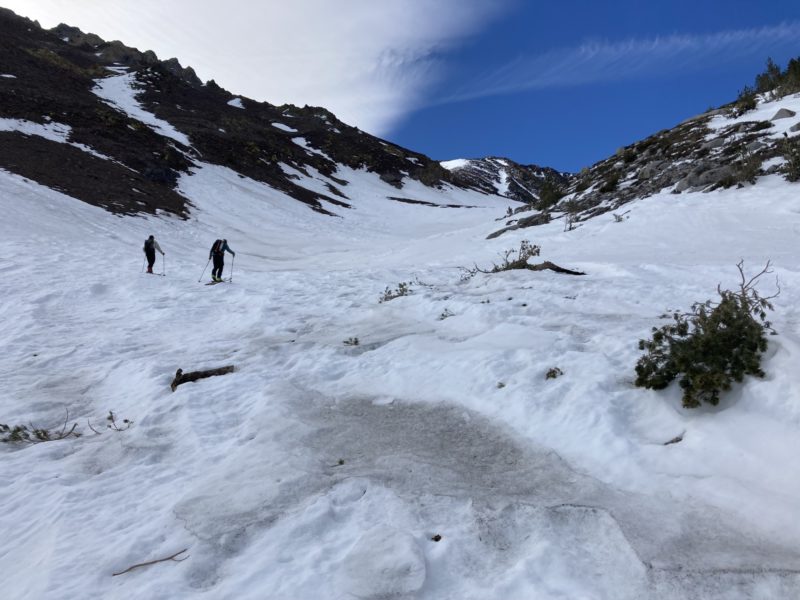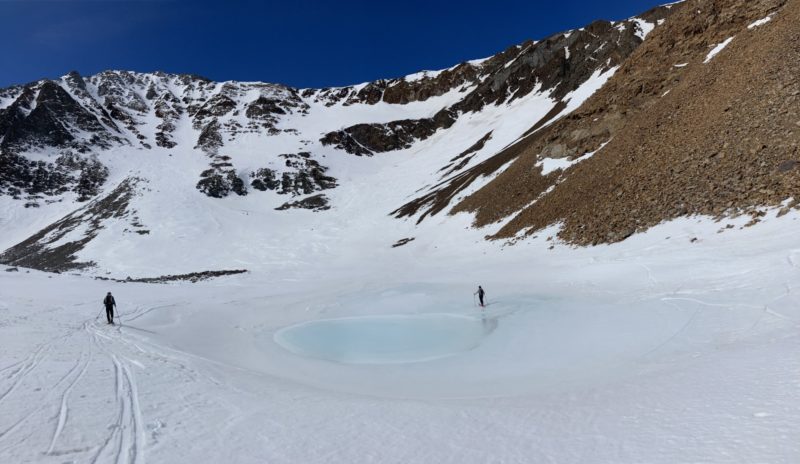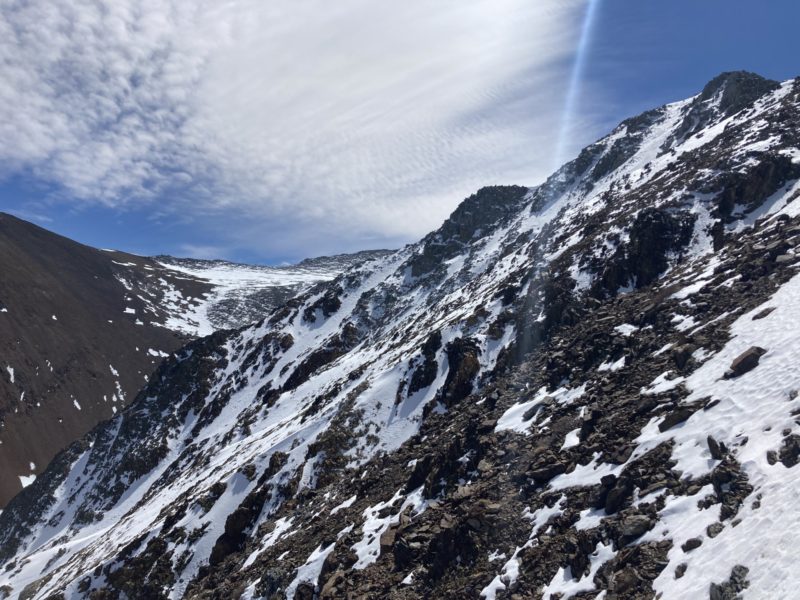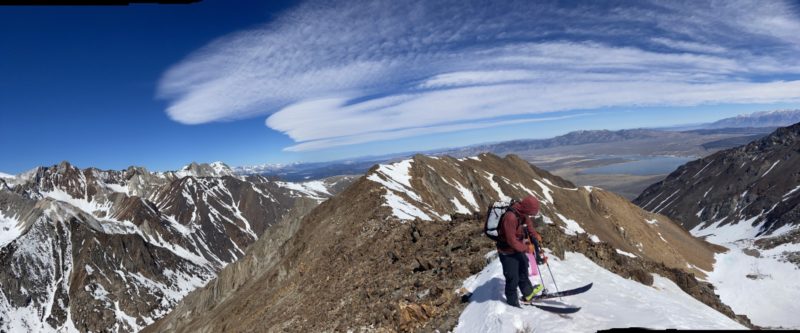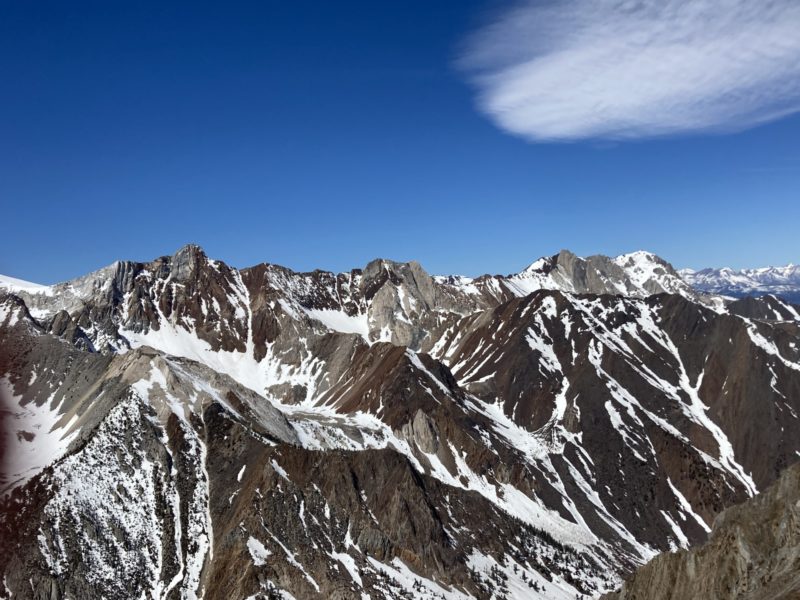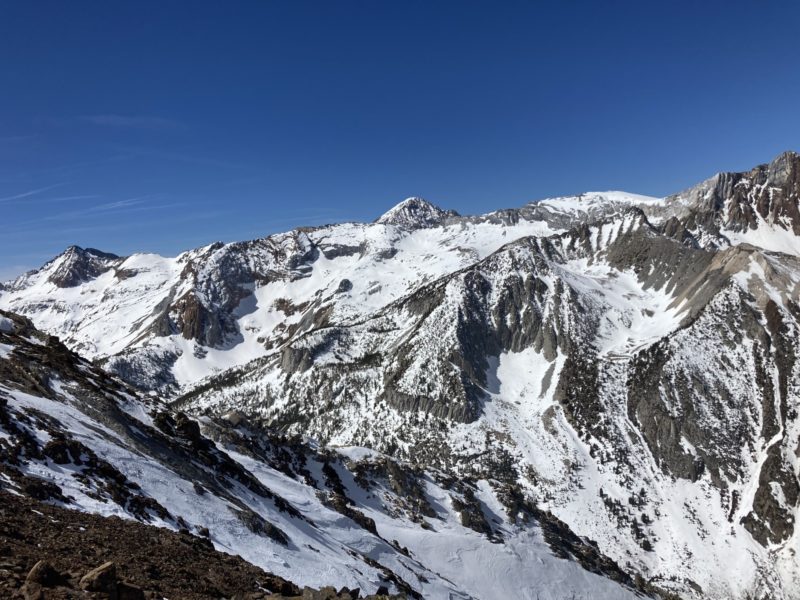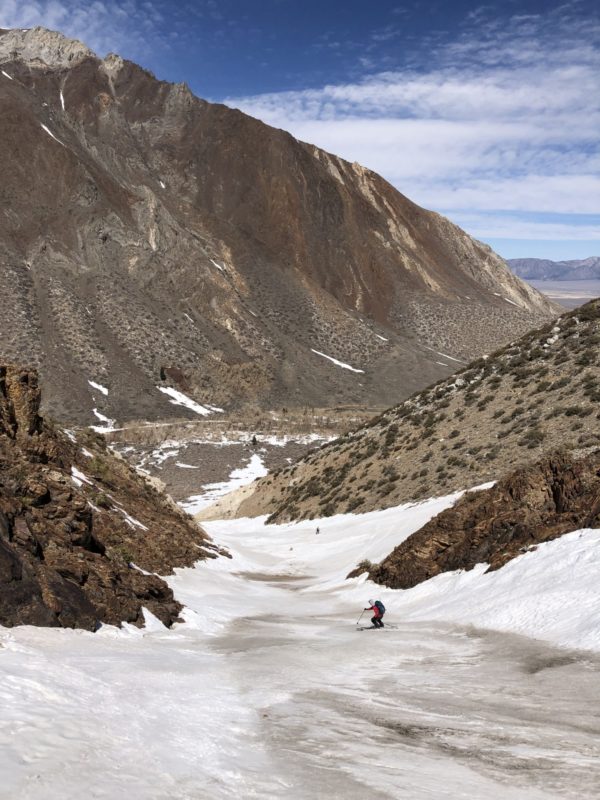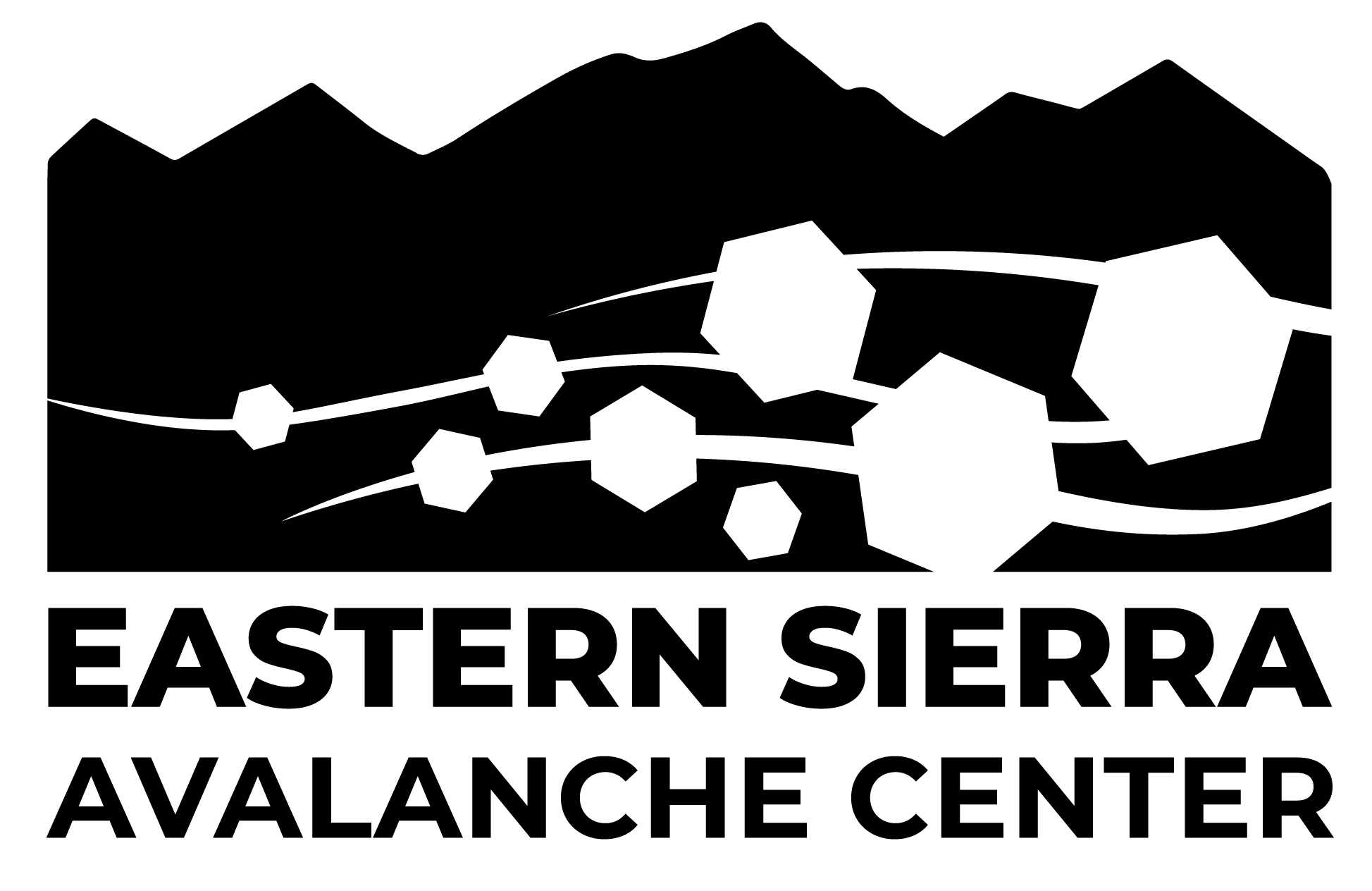Basic Information
Observation Details
Observation Date:
March 25, 2022 - March 25, 2022Submitted:
March 25, 2022Observer:
Mike Phillips | Key ObserverZone or Region:
McGee CreekLocation:
McGee Creek - High cloud and Waning CoverageSigns of Unstable Snow
Recent Avalanches?
None ObservedCracking?
None ExperiencedCollapsing?
None ExperiencedSnow Stability
Stability Rating:
Very GoodConfidence in Rating:
HighStability Trend:
SteadyKey Points
The ESAC forecast team took a tour together in the McGee Creek drainage today. A high cloud kept the strong sun at bay for a while which resulted in the snow surface remaining cool and supportable throughout our tour between about 8:30 and 1:30. Temperatures were warm, but not outrageous and winds were mostly light and variable in Esha Canyon. At 11600′ on the ridgetop, winds were more moderate and consistently out of the West. We observed no signs of loose wet snow instability throughout our tour.
The McGee Creek road is closed at the normal winter closure location, but clear of snow all the way to the pack station. Coverage on S facing aspects of McGee Mountain and Mt. Aggie is almost non-existent. Looking up-canyon, snow coverage on the canyon floor is minimal at least until the mouth of the Baldwin Cirque drainage. With some careful hunting a log crossing is easy to find near the pack station to access terrain on the South side of the creek. Snow extends almost to McGee creek out of Esha Canyon.
Esha Canyon itself is not a continuous ribbon of snow to the base of Esha Peak, and features a variety of textures, and quite a bit of dirty snow from previously strong winds. Both canyon sidewalls hold scabby, old ribbons of snow confined mostly to gullies loaded by the wind. Very old avalanche debris originating from some of these gullies is scattered about the canyon floor, likely from the big storm cycles of December. Ski crampons were very useful on the entire climb up the canyon, as we experienced very minimal if any softening until we began climbing Esha Peak itself. Steeper East aspects were the first to warm and soften. Ski and boot penetration was minimal while skinning and cramponing up NE and N facing terrain. Slide for life and assorted obstacles are still in the front of mind in the alpine.
Esha Peak looks similar to early season conditions right now with some of the chutes closing out with mid-slope cliff bands/rocks blocking continuous snow. In general, the peak itself is showing signs of wear from wind and a lack of substantial snowfall. There was no evidence of recent loose wet avalanche activity, but we did see a couple small rocks tumble off of E facing terrain high in the cirque. On more North facing terrain we still found cold, dry snow on the surface and there are still near surface facets lurking in pockets that don’t see direct sun. The snowpack is shallow and generally right side up, and still in a state of transition on N thru E aspects at high elevations in this area. Due East facing terrain that was shallow and near dark rocks held the best melt-freeze snow for smooth skiing.
While not very interesting from a snowpack stability perspective today, we did discuss the obvious red-flag of above average temperatures and strong sun contributing to the Loose Wet avalanche problem. As the cloud broke and the afternoon pressed on, I’m fairly confident that some of the areas we traveled on today would have become less supportable and more concerning. Our timing was mostly luck given a later than usual start, but the cloud cover and breeze did play a role. Looking North, to South and East facing terrain in the McGee and Convict Creek drainages, we saw no obvious signs of fresh avalanche activity, but this may be because of a lack of snow and these aspects being pretty cooked down to a more supportable and resilient snowpack. Looking West to the Sierra Crest there is more snow, but not an impressive spring snowpack. There is still much opportunity for exploration and adventure in the farther reaches of the range, but some variability in coverage, snow quality, and avalanche conditions is to be expected as you start to venture out to these lesser traveled zones.
Media
